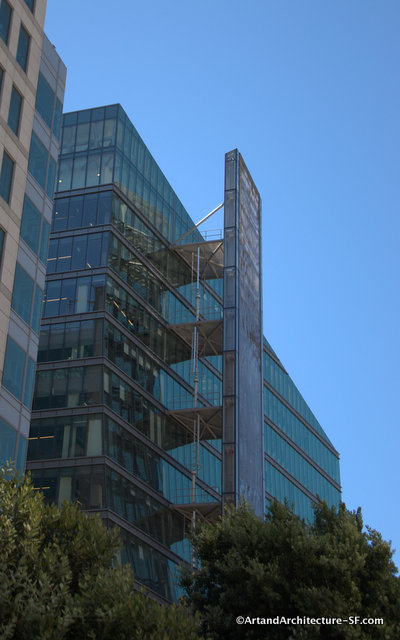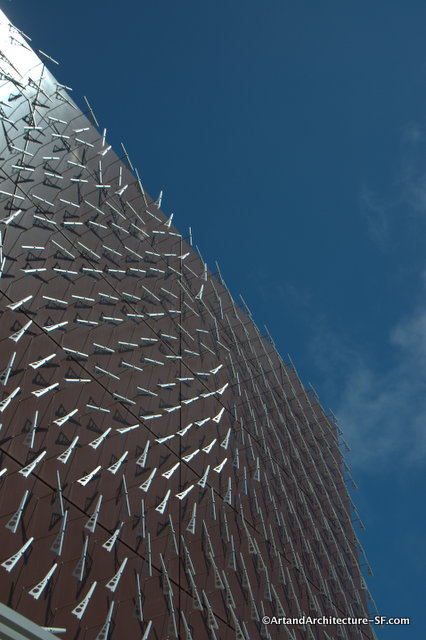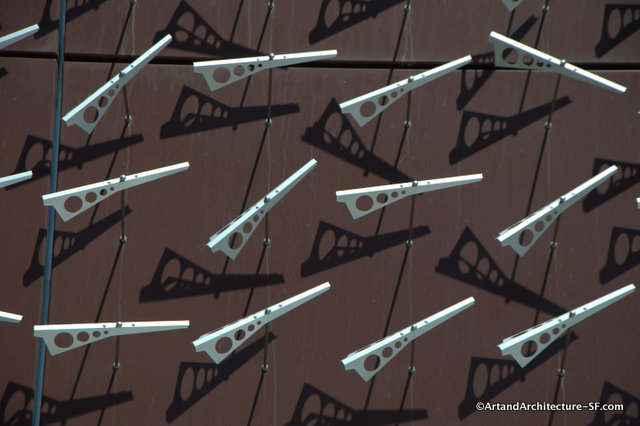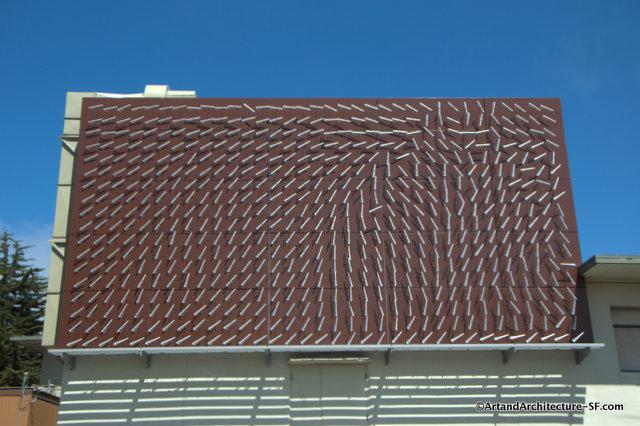525 Golden Gate Avenue
Civic Center
This is the new Public Utilities building in San Francisco. It is touted as one of the more “green buildings” built in the US. Four egg-beater-like wind turbines are on view behind a 200-foot-high, 22-foot-wide curtain of polycarbonate squares called Firefly.
Ned Kahn’s Firefly is a lattice of tens of thousands of five-inch-square, clear-polycarbonate panels that are hinged so that they can freely move in the wind. During the day, the ever-changing wind pressure profile on the building appears as undulating waves. At night, this movement is converted into light. As the wind presses the hinged panels inward a small embedded magnet connected to an electrical reed switch triggers the flickering of tiny LED lights. The lights are colored to mimic fireflies which are a threatened species due to their dependence on riparian ecosystems. The entire sculpture requires less energy than a 75-Watt light bulb.
An artist from Northern California, Kahn replicates the forms and forces of nature. Kahn combines science, art and technology to integrate natural, human, and artificial systems, and his specific works emphasise natural elements, such as water, fire, wind and sand; how these behave independently, and how they interact.
After graduating from college with an environmental studies degree, from 1982 to 1996 he designed educational exhibits at the Exploratorium in San Francisco. He apprenticed there to Frank Oppenheimer, the centre’s founder and brother of atomic physicist J. Robert Oppenheimer. Ned Kahn presents projects both in scientific settings and in art contexts.
*
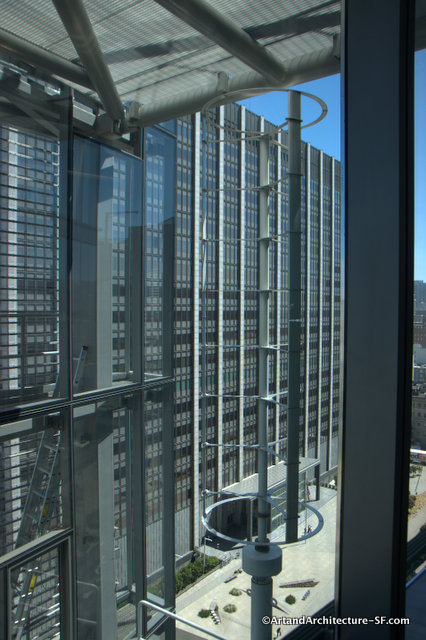 Wind Turbine taken from inside the building
Wind Turbine taken from inside the building
